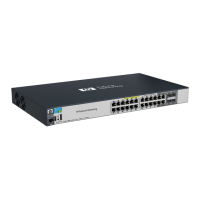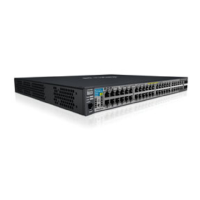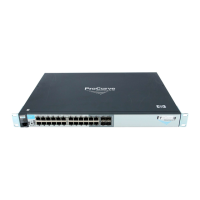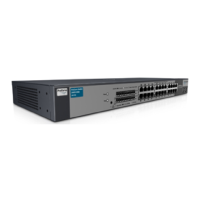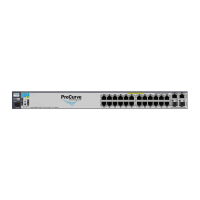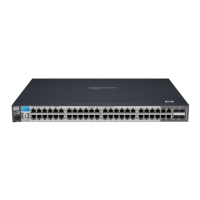4-2
Troubleshooting
Basic Troubleshooting Tips
Troubleshooting
Because the switch behaves in this way (in compliance with the IEEE
802.3 standard), if a device connected to the switch has a fixed configu-
ration at full duplex, the device will not connect correctly to the switch.
The result will be high error rates and very inefficient communications
between the switch and the device.
Make sure that all devices connected to the switch are configured to auto
negotiate, or are configured to connect at half duplex (all hubs are
configured this way, for example).
■ Faulty or loose cables. Look for loose or obviously faulty connections.
If they appear to be OK, make sure the connections are snug. If that does
not correct the problem, try a different cable.
■ Non-standard cables. Non-standard and miswired cables may cause
network collisions and other network problems, and can seriously impair
network performance. Use a new correctly-wired cable or compare your
cable to the cable in appendix B, “Cables and Connectors” for pinouts and
correct cable wiring. A category 5 cable tester is a recommended tool for
every 100Base-TX and 1000Base-T network installation.
■ Improper Network Topologies. It is important to make sure you have
a valid network topology. Common topology faults include excessive
cable length and excessive repeater delays between end nodes. If you have
network problems after recent changes to the network, change back to
the previous topology. If you no longer experience the problems, the new
topology is probably at fault. Sample topologies are shown at the end of
chapter 2 in this book, and some topology configuration guidelines can
be found online on the ProCurve Website at www.procurve.com/manuals.
In addition, you should make sure that your network topology contains
no data path loops. Between any two end nodes, there should be only
one active cabling path at any time. Data path loops will cause broadcast
storms that will severely impact your network performance.
For your switch, if you wish to build redundant paths between important
nodes in your network to provide some fault tolerance, you should enable
Spanning Tree Protocol support on the switch. This ensures only one
of the redundant paths is active at any time, thus avoiding data path loops.
Spanning Tree can be enabled through the switch console, the web
browser interface, or ProCurve Manager.
The 2910al Switch devices also support Trunking, which allows multiple
network cables to be used for a single network connection without
causing a data path loop. For more information on Spanning Tree and
Trunking, see the Management and Configuration Guide, which is on
the ProCurve Website at www.procurve.com/manuals.
